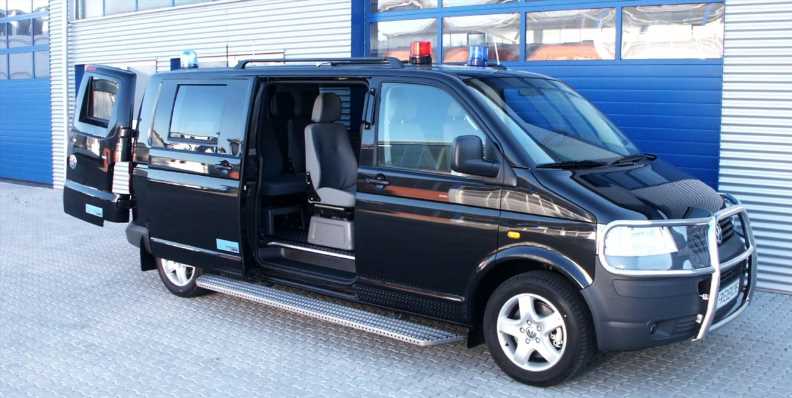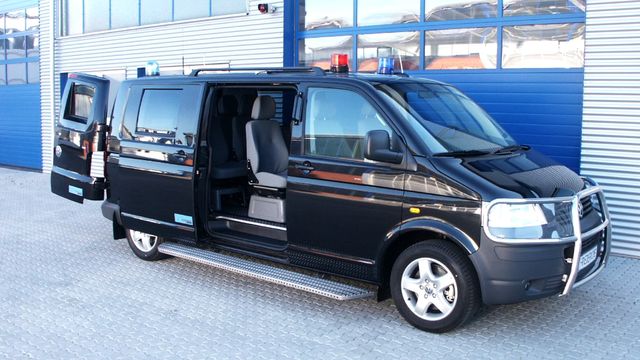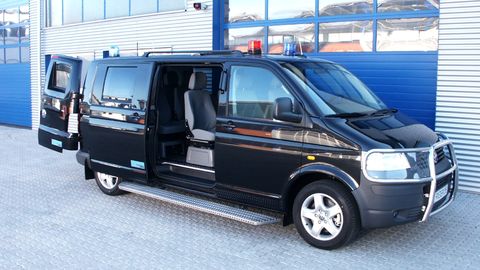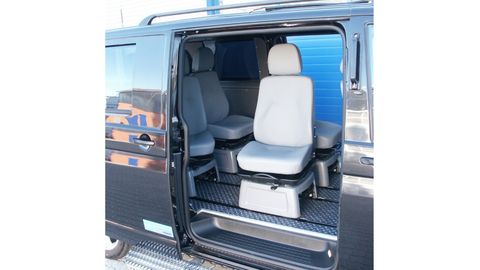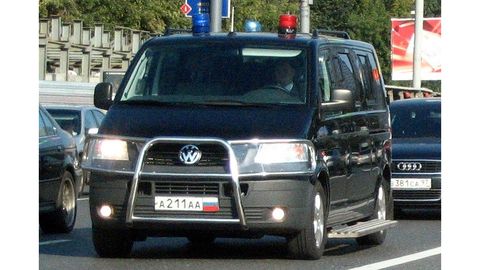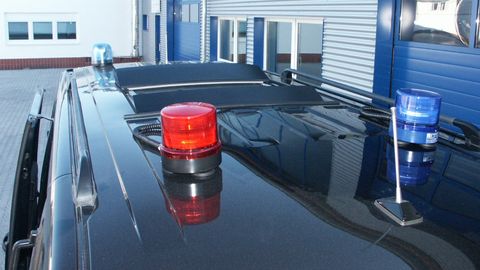If you go down to your local Volkswagen dealership and ask for a bodyguard vehicle, they won’t sell you one. But if you ask Germany’s Carl Friederichs GmbH to sell you a bodyguard vehicle, they’ll ask what options you want in it and show you a few types of vehicles they’ve made.
Forty years ago the variety of vehicles available anywhere was fairly limited. The U.S. had relied on a number of domestic armoring specialists like O’Gara Hess & Eisenhardt to build cars for U.S. presidents, but when it came to the rest of the world, the variety of off-the-shelf vehicles was much smaller, and that mostly from Mercedes-Benz.
In addition to armored presidential limousines, the U.S. had also been using modified Cadillac models to carry bodyguards. These featured various running boards, a reworked interior, and handrails positioned along the roof and trunk. The purpose of these escort cars was to allow members of the president’s security detail to dismount or enter the vehicle while it was on the move or stopped. In the U.S. and several European countries in the 1960s and 1970s, these were still mostly sedans or limousines with raised roofs, but in the 1980s the U.S. had begun using modified Chevy Suburbans for this role. The age of the SUV had arrived, but as ubiquitous as these vehicles had become, they did not represent the security vehicle’s sole evolutionary direction.
Frankfurt-based Friederichs has been building specialty armored vehicles for decades. Most of them are of the cash truck variety and are bought by banks, but the company also takes on custom projects in smaller numbers for various clients around the world. This Volkswagen T5 Transporter is one such vehicle, several of which had been built about a decade and a half ago for a head of state’s motorcade, and it offers a rare look into how the needs of security details have evolved over time.
For starters, the interior is made to be easily reconfigurable and features a metal floor with seats on rails, allowing members of the detail to switch up the layout on a moment’s notice. The seats can rotate and move along the rails for different types of trips, whether it’s the daily trip from a residence to the center of the city, or a trip within a city that requires members of the security detail to dismount and work with crowds. The key to Friederichs’ VW is flexibility and ease of use, with a low metal floor helping with ingress and egress. The sliding doors allow the VW to easily travel with the doors open at low speeds, and for bodyguards to easily enter and exit the vehicle while it’s on the move. The rotating seats also allow the bodyguards to sit with their bodies facing the doors rather than the front of the vehicle, ready to deploy in a flash. The running boards also allow the bodyguards to stay outside the vehicle while it’s moving at slow speeds, in situations where a motorcade is traveling slowly.
You’ve probably noticed the unusual window openings by now, which resemble the ballistic glass frames found on some armored SUVs. In reality, the windows have been reworked solely with the purpose of opening and closing them quickly—the vehicle itself isn’t armored—allowing bodyguards to trade fire with potential attackers. So except for the front doors which remain unmodified, all the glass frames have been replaced by ones that can be quickly lowered when the situation calls for it.
If there’s one item you might note is missing from the interior, it’s seatbelts for the four rail-mounted seats. Another curious feature are plexiglass covers on the headlights. Those are there to prevent rock chips to the headlights, as these vans often travel in tight formations at high speeds.
If you’re itching to know who these were made for, the answer may surprise you. These vans were made for Russian president Dmitry Medvedev’s motorcade during his term in office from 2008 until 2012, adding to a number of other specialty vehicles used by Russia’s Federal Protective Service (FSO). Friederichs made a variety of vehicles for the FSO since the 1990s, including earlier versions of the VW Transporter used by Boris Yeltsin’s motorcade, which served next to stretched Mercedes-Benz G-Class vehicles modified by BINZ GmbH, and Mercedes-Benz V-Class minivans outfitted in a similar manner. Friederichs also produced larger armored Sprinter vans for the same agency.
“The T5 vans took over for the earlier Transporters that were used during Yeltsin’s time,” a source familiar with the agency’s history tells us. “But those older Volkswagens weren’t as numerous in the 1990s, with the FSO mostly using several different G-Wagens from BINZ at the time. The Volkswagens were ordered in a larger batch by the mid-2000s, becoming the main bodyguard vehicles in Medvedev’s motorcade, playing the same role as the stretched G-Wagens but being more user-friendly with a larger interior and a lower center of gravity. Despite their use of G-Wagens for the same role, they’ve [the G-Wagens] had a few handling issues. The Volkswagens are better suited for this role, even though they can’t do much off-roading.”
Why would the vans need to go off road at all?
In practice, vehicles of this type mostly need to be able to climb over curbs, which is one of the reasons the FSO had been using G-Wagens since the mid 1990s. This made them a little more flexible than the older VW Transporters, but since the main W140 or W220 limos can’t climb over curbs all that easily, it’s clearly not a strict requirement for the types of driving they do.
“The Transporters could climb over curbs, but they really don’t do it all that much in the course of a normal day,” our source adds. “They’re also better for travel inside the country cause they can be stowed inside a cargo plane easier than the G-Wagens. But then again, if the armored Sprinters can get inside a cargo plane, then certainly the G-Wagens can as well. These are a little better than the G-Wagens for what they do during a normal day, really. These are thought to be better at high speeds and they don’t bounce around as much.”
But what vehicle played this role in Russian motorcades before the Transporters of the 1990s?
“It was really just the ZiL 41072 Scorpion, which evolved from a ZiL 41045 that was created as a kind of prototype,” the source tells us. “They wanted to have a sedan with a reworked interior with seats that could move on rails, but they really only got it in the late 1980s when the Scorpion arrived. But there weren’t all that many Scorpions, and when reliance on ZiLs stopped in the early 1990s, they ordered a number of different cars, including Chevy Blazers and Suburbans, to test out different unarmored vehicles. The VW vans weren’t the dominant choice for a while, but in the mid-2000s they ordered a bunch of them for this role.”
You may not be able to buy a van exactly like this at your VW dealer (because VW doesn’t even offer minivans in the U.S. anymore), but you can still buy older VW Eurovans (as they were known here) on the used market, and outfit them similarly, with a push bar, plexiglass headlight covers, and running boards. It’ll certainly look more imposing than the latest SUVs on the school run or the morning commute.
Source: Read Full Article
